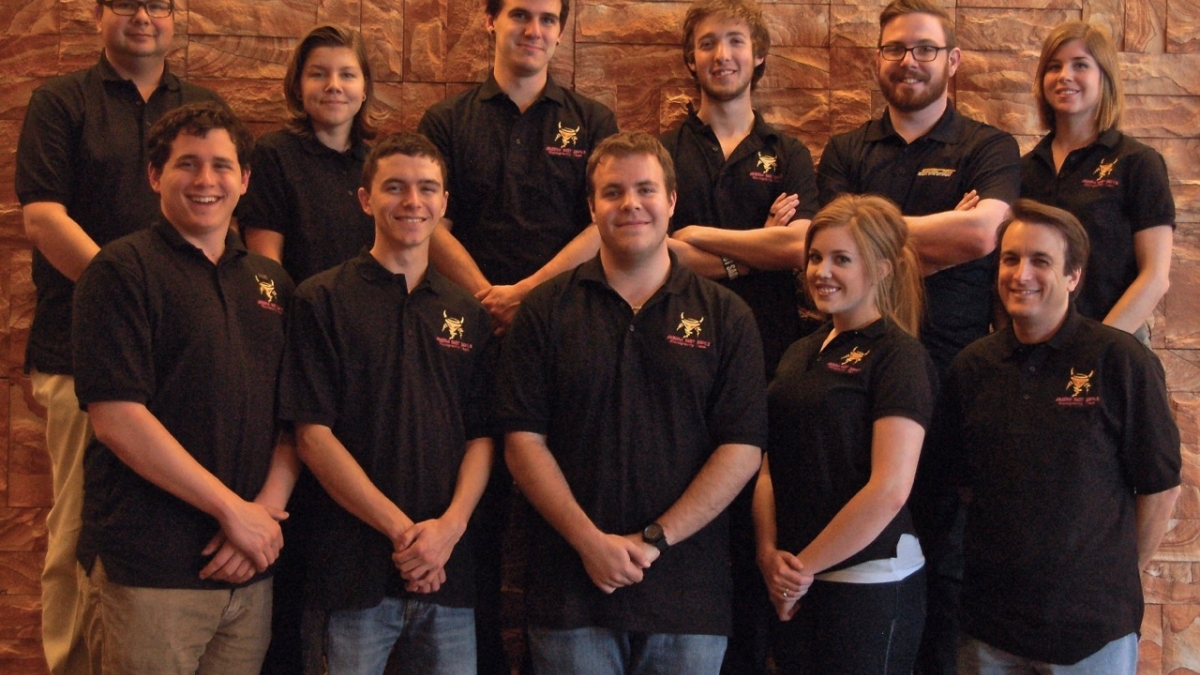ASU students step into zero gravity to study planetary formation

NASA has selected five students from the Dust Devils Microgravity Team at Arizona State University to fly an experiment on the “Vomit Comet,” the endearing nickname given to an airplane that simulates zero gravity.
The airplane, a modified Boeing 727-200 owned by the Zero-G Corporation, was once used to train astronauts in the 1960s. It is now used for NASA’s Reduced Gravity Student Flight Opportunities Program. Based out of Houston, this program gives undergraduate students in the United States the opportunity to propose, build and fly an experiment designed for zero gravity.
The Dust Devils are studying the microphysics of dust. Specifically, the team is looking at how dust in space becomes electrically charged and clumps together to form planets. “How do planets form?” is a question scientists don’t have a full answer to, says team lead Jack Lightholder.
“We’re not developing a hypothesis that’s been tested a million times,” Lightholder said. “(The experiment) is cutting-edge because we’re not really sure of the answer.” The team’s experiment, which flew with NASA in 2012, is the first of its kind to study planetary formation from dust particles.
Lightholder (computer science), Elizabeth Dyer (astrobiology), Zachary Priddy (computer systems engineering), Alison Gibson (aerospace engineering) and RJ Amzler (astrobiology) will fly the experiment at NASA’s Johnson Space Center in Houston during the week of April 4-12. John Conafay (economics) is an alternate flyer. Paul Reesman (computer science) and Libby Loyd (aerospace engineering) make up the Dust Devils’ ground team. Lightholder and Gibson are ASU/NASA Space Grant interns.
The idea for the experiment came from team adviser and theoretical astrophysicist Steve Desch, who is a professor in the School of Earth and Space Exploration at ASU. The team’s engineering advisor is experimental astrophysicist Chris Groppi, also a professor in the school.
The experiment is made of 12 chambers filled with different kinds and volumes of dust. The team chose dust compositions based on material that is found in interstellar space. One chamber contains dust from the Murchison meteorite. The meteorite sample was donated by ASU’s Center for Meteorite Studies.
This year, the team has also mounted GoPro video cameras next to the chambers to record how the dust behaves in zero gravity. The team will only experience about 20 seconds of zero gravity at a time, so the experiment needs to be quick and reliable.
“We’re just simplifying the system like crazy,” said Lightholder. “It’s basically just one click to turn it on and off.”
Although NASA foots the $5,000-per-person flight bill, the Dust Devils have to pay to build the experiment, and to travel to and from Houston for flight week – a total of about $10,000. ASU/NASA Space Grant is helping to cover some project expenses. To help make ends meet, the team started an Indiegogo crowdfunding campaign.
“Crowdfunding is essentially, you put out a pitch and you say, ‘Hey this is what we’re doing, this is what we need the money for and here are the different perk levels,’” said Conafay, team treasurer and economics major.
For example, for a $25 donation the team will give the donor photos from the flight, a social media shout-out and an ASU Dust Devils Mission Patch. For a $500 donation, the donor will get one of the GoPro Hero 3+ Silver Edition cameras used on the experiment, along with the perks offered at lower price levels.
The team is hoping to raise $2,000 through its Indiegogo campaign.
The amount of time spent on the experiment is comparable to a full-time job. And all of that work is done on top of being a full-time student. But the team members are grateful for the experience.
“My stance is that the whole college experience is three parts: It’s the academics you learn in your classes, it’s networking and it’s hands-on experience, because there’s a lot you just can’t learn in a book,” Lightholder said.
To donate to the Dust Devils, visit their Indiegogo campaign page.
The School of Earth and Space Exploration and the Center for Meteorite Studies are research units in ASU's College of Liberal Arts and Sciences.
Written by Kristen Hwang.